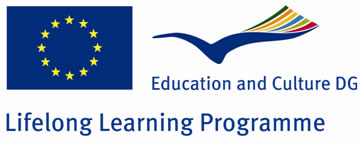|
|
|
|
|
|
Objectives:
- To allow all of the students to have a better understanding of the cultures in each country by familiarizing them with
the artists in their respective countries and through permanent exchange (using internet technologies) between the different schools involved
in the project.
- To offer an innovative teaching environment which allows secondary school students to learn about the field of arts.
- To raise awareness of the importance of intercultural dialogue, especially among young people, which aims to contribute
to foster an active European citizenship - cosmopolitan and with respect for cultural diversity.
- To enhance interest and respect for the originality and variety of other cultural, national and religious groups.
- To contribute to the creation of friendly environment for co-existence of diverse identities and ways of living;
establish a network of organizations for the promotion and development of initiatives in intercultural dialogue.
- To reveal national identity via traditional arts and compare it with the European identity; to create modern European
identity using artistic activities (art, music, dance).
- To raise the awareness among Europeans, in particularly young people, on the importance of engaging in intercultural
dialogue in their daily life as well as to foster the role of education as an important medium for teaching about diversity and increasing
the understanding between cultures.
- To promote intercultural dialogue among students and teachers and to get to know the culture of the people that live in the society.
- To talk about values in an intercultural perspective.
- To encourage the mutual respect between young people, with different cultural backgrounds.
What are the similarities, what are the differences?
- To confront younger generations with differences in culture, opinions and behavior and to look for ways to cope with these issues
in an open manner without judging each other.
- To stimulate an active European citizenship that honors cultural diversity and is based on common values through artistic presentations.
|



